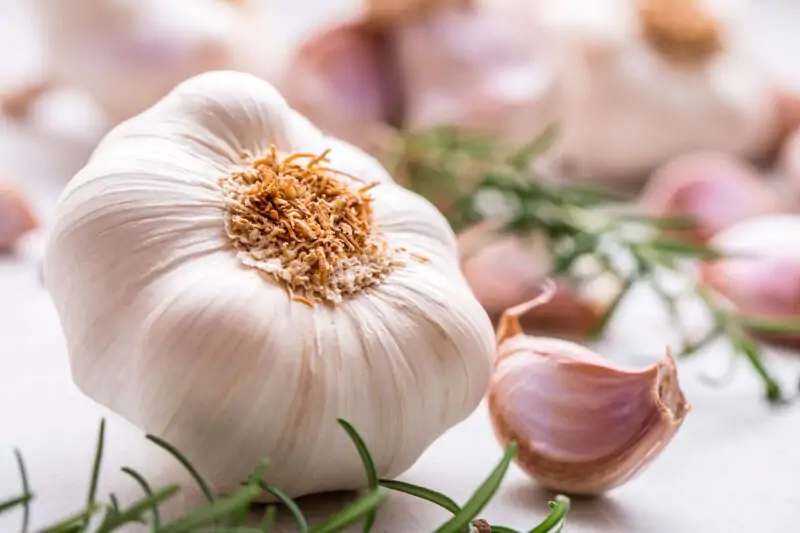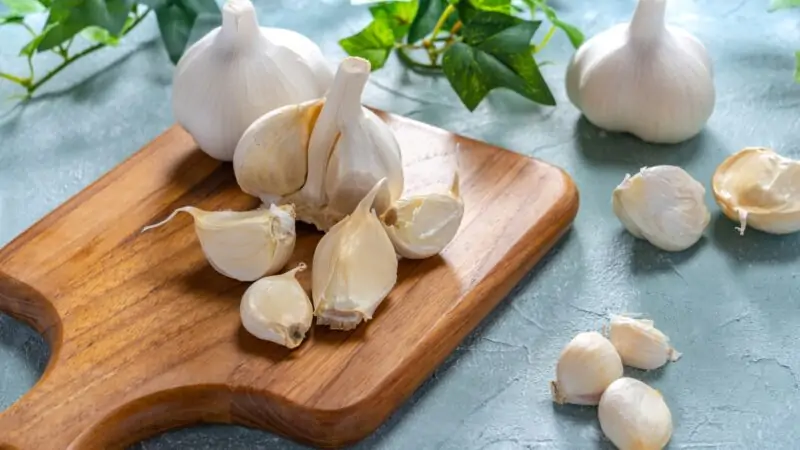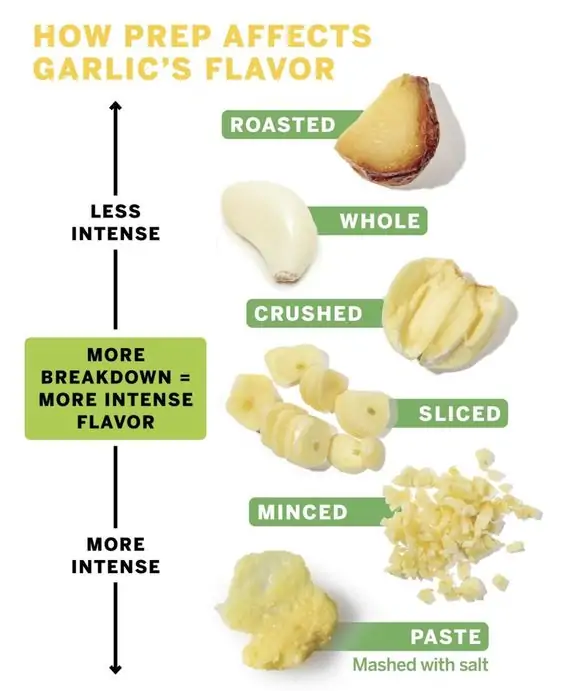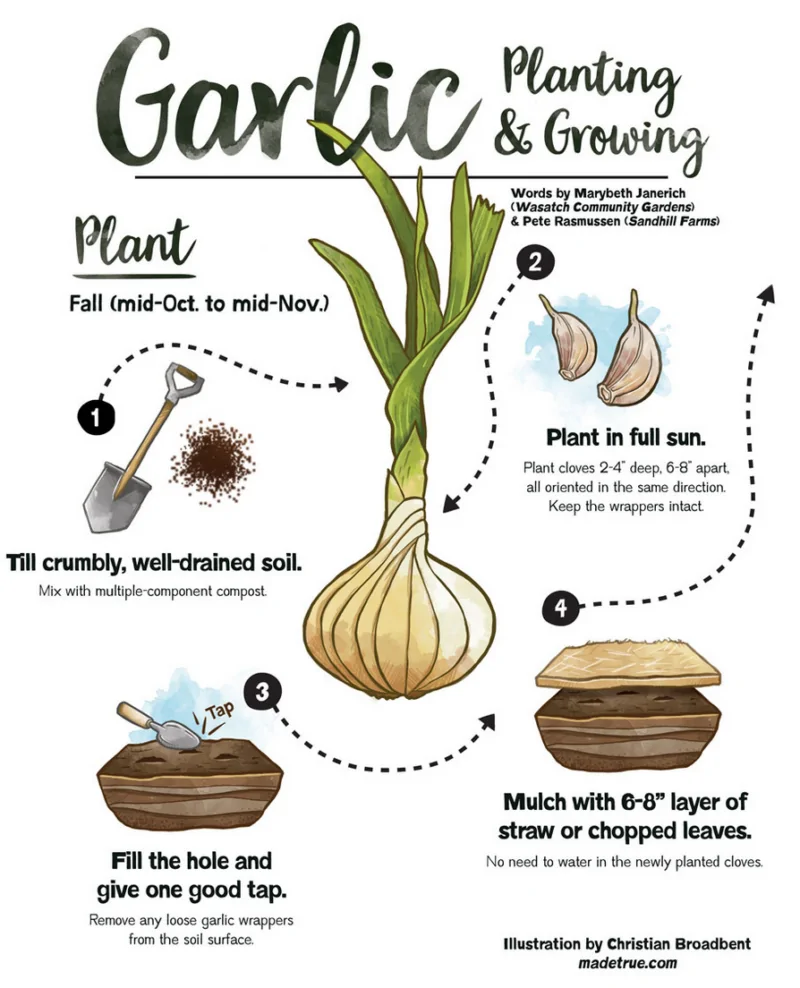Is Garlic a Vegetable, Herb or Spice: Find Out the Truth

Is garlic a vegetable or an herb? This question has been debated for years, and there is no clear answer. However, one thing we can all agree on is that garlic is a culinary staple in households around the world. Whether you’re making pasta sauce, stir-fry, or even roasted chicken, chances are you’ll be using at least one clove of this pungent herb.
In this article, we will dive deeper into the features of the garlic plant and explore its botanical and culinary classifications. We’ll discuss how to use it in different forms such as raw cloves or powdered form. Additionally, we’ll check out some nutritional benefits that come with consuming it regularly along with tips for growing and storing them efficiently.
Is Garlic a Vegetable, Herb, or Spice?
This age-old debate about whether garlic qualifies as a vegetable or an herb stems from two different perspectives: Botanical classification vs. Culinary Classification.
Botanical Classification of Garlic
Botanically speaking, garlic (Allium sativum) belongs to the Alliaceae family, which includes onions (Allium cepa), leeks (Allium ampeloprasum var. porrum), chives (Allium schoenoprasum), and more. Therefore, by definition, garlic is a vegetable that is considered part of the “bulb” subclass (widely known as onion family) because these plants do not produce seed pods like other vegetables or fruits.
Culinary classification
From a culinary perspective, garlic falls under the herbs category: ask any cook, and they will immediately tell you that garlic is like a spice or herb. Garlic flavor allows adding it to the company of herbs alongside basil leaves and rosemary sprigs, while vegetables tend towards carrots, broccoli, tomatoes, and others. So depending on your needs, either way, works fine!
Exploring the Features of the Garlic Plant
The scientific name for garlic is Allium sativum. It’s a perennial plant that grows in many parts of the world, including Asia, Europe, and North America. This herb can grow up to 3 feet tall; fresh garlic has long green stalks with small white flowers.
The Garlic Clove: A Closer Look
Garlic bulbs are composed of smaller pieces called cloves which together make up the whole bulb. These parts of the plants are protected by a sheath called papery skin or tunic enclosing the pale yellowish flesh – the edible part.
Pale Yellowish Flesh and Papery Skin
The papery exterior layer protects the healthy goodness inside – it’s called “skin”. Not only does this prevent moisture from escaping, but it also helps keep out unwanted pests and bacteria from the edible parts. Typically removed before consumption, the skin protects the tender yet mustardy flavor of the flesh.
Edible Fire: Understanding the Use of Garlic
More than just adding taste to food, there are several ways to use garlic in your cooking routine.

Garlic is indeed one of the most utilized herbs: it is used in many cuisines around the world. From roasted potatoes, soups, stews, pizzas, burgers, dips, sauces – garlic is a plant that is used as ingredient in many dishes.
To add flavor to your dishes use fresh cloves, peel them off (use a knife or blunt backside of a spatula), crush, mince, or finely chop according to the recipe, then mix into the required ingredients as per the instructions provided in the recipes.
For those who aren’t fans of raw garlic’s bite, roasting, boiling, or grilling enhances its natural sweetness while minimizing sharpness. Additionally, it often comes in pre-peeled and minced forms available at the store or market if convenience suits you better.
Raw Garlic: To Eat or Not to Eat?
Raw cloves have a more potent aroma and flavor profile compared to cooked ones due to their higher content of sulfur compounds. When used to flavor dishes, they are known to help with immunity boosting, lower cholesterol levels, lower blood pressure, and even fight off cancerous cells. However, as mentioned earlier, raw garlic may be too strong for some stomachs to handle, so it’s often a good idea to start slow and build up over time if feasible.
If you decided to eat garlic raw, you might want to drink some milk after this as milk is known to reduce the odor of the plant.

Roast Garlic: A Flavorful Alternative
Roasting garlic bulbs can offer an entirely different experience by producing sweeter flavors than the traditional pungency of raw ones. It also makes them easier on sensitive digestive systems since heat typically mellows out sharpness.
Garlic Powder: A Versatile Option
If using fresh cloves is not available or inconvenient at times, powdered garlic usually works just fine too! Just remember that less is more in terms of quantity because the powder has a more concentrated flavor profile compared to normal cloves – use accordingly!
Nutritional Benefits of Garlic
Not only does garlic add bold taste and aroma profiles, but your body will reap numerous health benefits from consuming it regularly:
Why Garlic Is Considered Beneficial
Besides tasting great, garlic contains a variety of beneficial properties. It’s loaded with antioxidants (allicin being the best-known of them), vitamins, and minerals, all of which contribute to a healthy immune system function. Additionally, medicinal properties of garlic include helping maintain low cholesterol and blood sugar and reducing the risk of heart disease and cancer. It is little wonder that garlic has been used as an ingredient in many recopies of traditional medicine for numerous millennia.
Comparing Garlic to Other Vegetables and Herbs
It turns out that garlic packs quite a punch when you compare its nutrition content against other veggies and herbal counterparts – tomatoes, onions, and bell peppers simply don’t match up.
Garlic offers essential nutrients like vitamin C, B6, selenium, manganese, and fiber without adding many calories to the dish served. Look no further than this amazing herb on your next trip to the grocery store!
Growing and Storing Cloves of Garlic

Growing garlic couldn’t be simpler! Here are a few tips:
Growing from Cloves
Garlic is relatively easy to grow which is definitely good news. Pick large, firm, and plump-looking cloves free from bruises or cracks, as small ones usually won’t produce good-sized bulbs. Plant them about 2 inches deep in well-drained soil during the fall season (late autumn) for a spring harvest or early springtime (mid-Feb to May depending on location) for a late summer/fall harvest.
Storing Fresh and Dried Garlic
Store fresh garlic whole in a cool, dark place with ventilation such as a pantry or cupboard. Avoid putting it near high moisture content areas like the sink, dishwasher, or refrigerator. Most varieties retain freshness for up to 4 weeks once harvested, but sometimes they may go bad before that period.
Drying is another way of storing cloves long-term; just hang bunches out of direct sunlight until they dry completely, which takes anywhere from a few days to over a week depending on humidity levels at a given location. Then store it either in a braid, twine, basket, or bag.
Allium Sativum: FAQs
Here are some frequently asked questions about garlic:
As we discussed earlier, garlic falls under the “bulb” category when looked at from a botanical perspective because it doesn’t produce seed pods. This classification changes, however, when considered for cooking purposes – it’s an herb!
Many folks confuse the bulb section of the plant with roots, but that’s not true! As mentioned previously, garlic belongs to the Allium family alongside leeks, onions, chives, and more, thus making them stem vegetables more than anything else.
Indoor growth can be possible but requires extra care and attention since bulbs need adequate drainage, minimal amounts of fertilizer, good air circulation, and natural sunlight exposure at temperatures around 60°F (15°C). Since space restrictions limit the extent of yield achievable compared to outdoor planting, it’s certainly a more challenging option overall!
It’s best to grow garlic during seasonal times outdoors: fall/winter months till mid-spring season, as the majority of cultivars require cooler temperatures to start rooting prior to entering the dormant stage later on. In general, harvest bulbs when leaves turn yellow or brown and don’t wait too long so they won’t rot away in the ground.
Conclusion
Garlic is a versatile and essential ingredient for any kitchen around the world. Whether you’re roasting it with potatoes, mixing up your favorite sauces, or just adding that extra flavor to your dishes, garlic will always be there to add its unique aroma and taste profiles.
Now you have the answer to the question is garlic a vegetable: the answers differ depending on whether you prefer to choose the botanical classification as a member of the bulb family (when you use this approach, garlic is considered a vegetable) or culinary classification (garlic isn’t a vegetable but a herb). You also know the nutritional benefits offered by consuming cloves regularly, along with tips for growing, harvesting, and storing them until used.
So next time you’re at the grocery store, don’t forget to pick yourself up a few plump, juicy cloves – your taste buds (and body) will thank you!
References
- Block, E. (2010). “Garlic and Other Alliums: The Lore and the Science.” Royal Society of Chemistry.
- Kamenetsky, R., & Rabinowitch, H.D. (2006). “Allium Crop Science: Recent Advances.” CABI Publishing.
- Rivlin, R.S. (2001). “Historical perspective on the use of garlic.” The Journal of Nutrition, 131(3), 951S-954S.
- Agarwal, K.C. (1996). “Therapeutic actions of garlic constituents.” Medicinal Research Reviews, 16(1), 111-124.